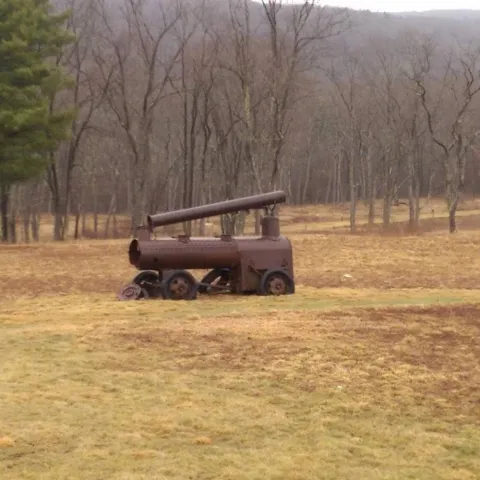Pithole City
Pithole City was a short-lived oil boom town with a population of over 10,000 at its peak. It sprang to life overnight in the Pennsylvania oil country, six years after the oil rush had begun.
On January 7, 1865, I. N. Frazier and James Faulkner drilled the Frazier well on the Holmden farm on Pithole Creek. This well became the most productive one in this section. Soon, another productive well, the Homestead, began producing.
Excitement ran high, as this was a new oil field, unforeseen, several miles into the wilderness, and it looked promising. People flocked to the area in crowds. The Civil War had just ended, and many men sought employment.
In May of 1865, five hundred building lots and twenty-two streets were laid out on the slopes above the Pithole Creek. As more wells were sunk and the people flocked in, the town began to fill up with quickly built wooden structures.Pithole City's most outstanding claim to fame is the oil pipeline, the first of its kind, which Samuel Van Syckel built five and a half miles to the closest railroad. The pipeline could carry oil much more cheaply than the teamsters could.
The decline and eventual end of the boom town came about almost as rapidly as its rise. Trouble appeared as early as August 1865 when the Homestead well suddenly stopped flowing and had to be pumped.
A series of disastrous fires swept through the oil fields over the next month, gutting many of the town's buildings. In November, the Frazier well played out.In January 1866, production declined sharply. And so it went. Operators, speculators, business people, and others began to depart, and by the end of the year, the great delusion had been lived out.
In 1955, interest in the site was renewed. The overgrown plot was cleared, and guideposts were set up for visitors. The Commonwealth of Pennsylvania now owns Pithole City as a historic landmark in the state's industrial development.
